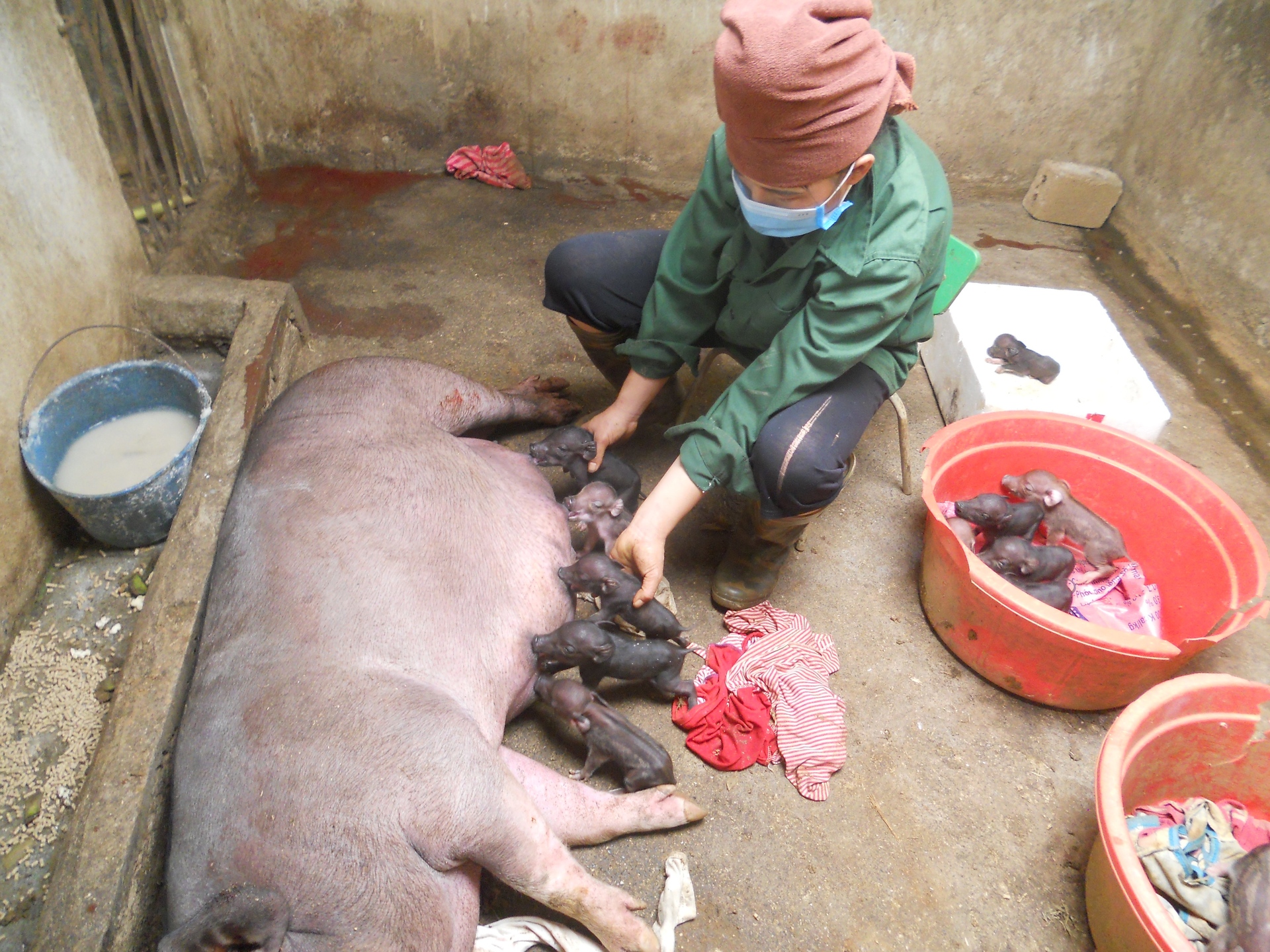
This is my sow, who is a local pig. This type of pig is the most commonly raised by the villagers. At the moment, there are few local males and the risk of inbreeding is high because they often mate with the sows in the village. As such, I chose artificial insemination instead of direct mating for my pigs. Previously, I bought semen for artificial insemination for my sows. Since I took part in the Li-chăn training on artificial insemination, the results have been much better. My sow gave birth to 15 piglets, with 12 of them growing very well.
After coming out of the womb, the piglets must be wiped clean from the tip of the nose, mouth and ears to the feet to ensure that they can breathe normally. After that, the umbilical cord must be tied and cut, followed by cutting the fangs so that the piglets don’t hurt the mother's udder when they suckle. These steps must be done quickly so that the piglets can breathe well and get colostrum from the mother. It is very important for the piglets to receive colostrum from their mother because colostrum contains many nutrients with antibodies that increase resistance, enabling the piglets’ immune systems to develop as well as possible. After giving birth, the sow should be fed with nutritious food. I often cook cornmeal porridge with salt mixed with pig bran, and feed the sow while the feed is still warm.
Narrator: Lèo Thị Xiền (Thai ethnicity, 31 years old)
Photographer: Hà Văn Chung (Thai ethnicity, 35 years old)